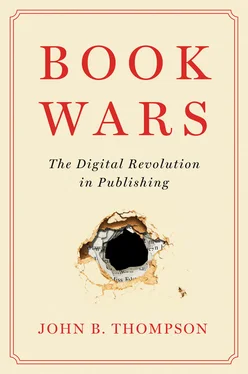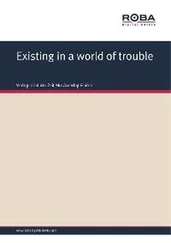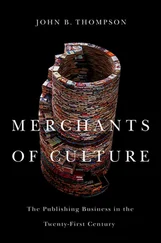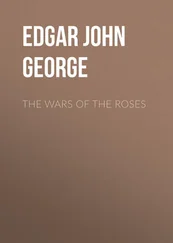My view is that what we have witnessed so far is not so much the invention of a new form of the book, as some of the more radical proponents of the ebook revolution promised, but rather the creation of a new format for the book, which, in terms of its basic organizational features, has remained largely unchanged by the digital revolution. The creation of a new format is certainly not insignificant and it has major implications for the book publishing industry and the many players within it. But it is nowhere near as disruptive as it might have been – or could conceivably still be – if the very form of the book were being re-invented. Let’s explore this distinction a little further.
By the ‘form’ of the book, I mean the way that the symbolic content that makes up the book is structured – e.g., as a sequence of chapters organized in a certain way, extended in length, etc. The ‘format’ of the book is the way that the book is packaged and presented to readers; the same book, structured in the same way, can be packaged and presented in multiple different formats without altering its form. (I elaborate this distinction in more detail in chapter 12.) To say that the digital revolution so far has created a new format for the book but has not changed its form is to say that, for the most part, books remain structured in the same way as they were prior to the digital revolution, but that they are now being packaged and presented to readers in new ways: that is, in a new format – the ebook.
The history of book publishing has been characterized repeatedly by the invention of new formats (or the relaunching of formats previously invented). The classic example of this was Allen Lane’s launching of a new series of cheap sixpenny paperbacks in the 1930s. These were books previously published by other publishers as hardbacks – typically at 7s 6d for a novel, and 12s 6d for a biography or history book – licensed by Allen Lane and reissued in a cheap paperback edition, priced at a mere sixpence, as part of a new series with a distinctive and recognizable brand: Penguin. The paperback itself, as a physical object, was not invented by Lane – paperback books had existed in the late nineteenth century and before, though they were generally regarded as ‘a lower form of life’. 10Part of Lane’s genius was to rebrand the paperback as a stylish new format that occupied a legitimate and valued position in the marketplace and in the life-cycle of the book. ‘We aimed at making something pretty smart, a product clean and as bright as two pins, modern enough not to offend the fastidious high-brow, and yet straightforward and unpretentious’, reflected Lane. 11He had sensed an emerging market – an expanding middle class with a degree of disposable income and an interest in reading good books if they were priced affordably – and he created a new and effective way of repackaging books to serve this market.
Not that it was all plain sailing. Lane faced much resistance at the time, especially from publishers and booksellers who felt that pricing books so cheaply would only result in people spending less money on books. ‘Nobody can live off sixpenny books’, remarked Charles Evans of Heinemann. ‘Nobody makes any money out of them except the Penguin publishers and possibly their printers.’ 12Evans refused to license Enid Bagnold’s bestselling novel National Velvet to Penguin, despite repeated pleas by the author. But over time the inexpensive paperback edition championed by Allen Lane and epitomized by Penguin would establish itself as a legitimate format – that is, as another way in which the same content can be repackaged, re-priced and delivered to the consumer.
The paperback format subsequently morphed into three separate formats with different dimensions and properties. The A format, 110 mm × 178 mm, commonly called the mass-market paperback, is typically used for books aimed at a wide readership; they are printed on cheap paper, sold at low prices and distributed through a wide range of retail outlets, including supermarkets and drug stores as well as bookstores. The B format, slightly larger in size at 130 mm × 198 mm, is used for more literary authors, while the C format, at 135 mm × 216 mm, is the same size as many hardbacks. Both B- and C-format paperbacks are typically printed on a higher-quality paper and sold at higher price points than the mass-market paperbacks; both are commonly referred to as trade paperbacks, to distinguish them from the mass-market paperbacks in the A format.
When there is more than one format available for delivering the same content to consumers and the pricing of the formats varies significantly, then the timing or phasing of the formats becomes important – in the business, this is known as ‘windowing’. In Anglo-American trade publishing, a book could potentially move through three phases or windows: it would typically start life as a trade hardback, with a list price in the region of $25–$35, depending on the size and the kind of book it is. Around 12–18 months later, it might be released as a trade paperback in a B or C format, depending again on the type of book, and priced in the region of $14–$17. And then, depending again on what kind of book it is, it could subsequently be released as a mass-market paperback in A format and priced under $10. But not all books follow this pattern: a book could go from a trade hardback to trade paperback and never be released as a mass-market paperback; or it could go from trade hardback directly into mass-market paperback; or it could be published initially as a trade paperback (a ‘paperback original’, as it’s sometimes called), without being published in hardback at all – there are many possible permutations. The publisher can use these different formats to maximize revenues and margins, target the book at different readerships and prolong the selling life of the book.
In the period from 2008 to 2012, when ebooks were taking off in Anglo-American trade publishing, it wasn’t clear whether ebooks would eclipse print books altogether, at least in some categories, and, if they did, what implications that would have for the form of the book – whether it would open the way for books to be reconfigured in some fundamental way. As it turned out, however, ebooks remained tied to print books – ebook files were just another output of the production process, along with the print-ready files that were produced for the printer. The content was essentially the same; what differed was the packaging, the delivery mechanism and the price. Many publishers experimented with creating ebooks in which the content was modified in some way – we’ll examine some of these experiments in the next chapter – but for the most part these experiments proved unsuccessful and the kind of ebook that came to prevail was the ebook that replicated the content of the print book but made it available as a digital file to be read on a screen, rather than as a print-on-paper book. In other words, the ebook became another format.
If indeed it is the case that ebooks are another format rather than a new form of the book, then the implications of this for the publishing industry are significant. Publishers know how to work with formats: there is nothing new, as we have seen, about the invention of new formats, and, despite initial resistance and anxieties that may run high, they are generally adept at integrating new formats into the array of options that are available to them to package and deliver their content to consumers. Ebooks simply become another revenue stream into which publishers can tap, in precisely the same way that, in previous decades, they tapped into the new revenue streams created by cheap paperback editions, whether these were mass-market paperbacks or trade paperbacks.
But if ebooks are best understood as another format, as I believe they are, then it is also important to see that this is a new format that comes with an array of special features, some of which have real advantages for publishers. First and foremost, the cost of sales is much lower than for printed books because nothing has to be printed and stored in a warehouse and there are no shipping costs (although there are real distribution costs, a fact often overlooked by those outside the industry). Just as importantly, there are no returns – that wasteful aspect of the traditional trade publishing supply chain simply doesn’t exist in the ebook world. Prices are typically lower and royalties are typically higher on ebooks, but the savings more than compensate for the lower prices and higher royalties, with the result that publishers’ profitability improves. Moreover, the shopping experience is now 24/7 and readers can get books virtually instantaneously if they’re happy to read them on a screen – no need to wait for a bookstore to open or wait for a book to be delivered by post.
Читать дальше












